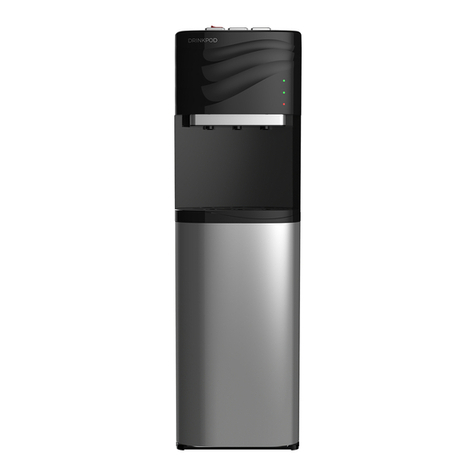
Important Safety Instructions
Important Safety Instructions 1
When using electrical appliances, basic safety precautions should always be followed,
including the following:
1. Read all instructions.
2. Should your appliance ever fail, please disconnect the power and water immediately before
calling for assistance.
3. To avoid leakage and damage, never remove appliance parts.
4. Unsupervised children should not be allowed to operate the machine.
5. Please use the product in a dry place within the temperature ranges of 40°F and 100°F.
6. Ensure the power cord is always unplugged before performing any maintenance,
troubleshooting, or lter upgrades.
7. Only use Kenmore or Drinkpod accessories and lters to avoid causing damage and voiding
product warranty.
8. For all service and support related issues, please contact Drinkpod.1-844-374-6576 or
9. Any and all repairs should only be attempted by qualied persons designated by Drinkpod.
10. Do not install the machine in a location exposed to direct sunlight.
11. Never store or expose your 100 Series in an environment less than 32°F.
12. This appliance is not intended for use by persons with reduced physical, sensory, or mental
capabilities, or lack of experience and knowledge, unless they have been given supervision or
instruction concerning use of the appliance by a person responsible for their safety. Children
should be supervised to ensure they do not play with the appliance.
13. If the supply cord is damaged, it must be replaced by the manufacturer, one of its designated
service agents, or similarly qualied person, in order to avoid all hazards.
14. Do not store explosive substances such as aerosol cans, or other items with a ammable
propellant, in this appliance.
15. This appliance is intended to be used in household and similar applications, kitchens, oces,
and similar non-retail applications.
16. The appliance should only be plugged into a grounded three prong socket. A surge protector is
recommended.
17. The appliance should never be turned upside down, or tilted more than 45°.
18. The appliance should never be cleaned utilizing a compressed water stream.
19. This product is designed for household use only!
20. WARNING: To avoid any hazards due to instability of the appliance, it must be
installed, maintained, and repaired, in accordance with this manual.
SAVE THESE INSTRUCTIONS!
IMPORTANT SAFETY INSTRUCTIONS






























